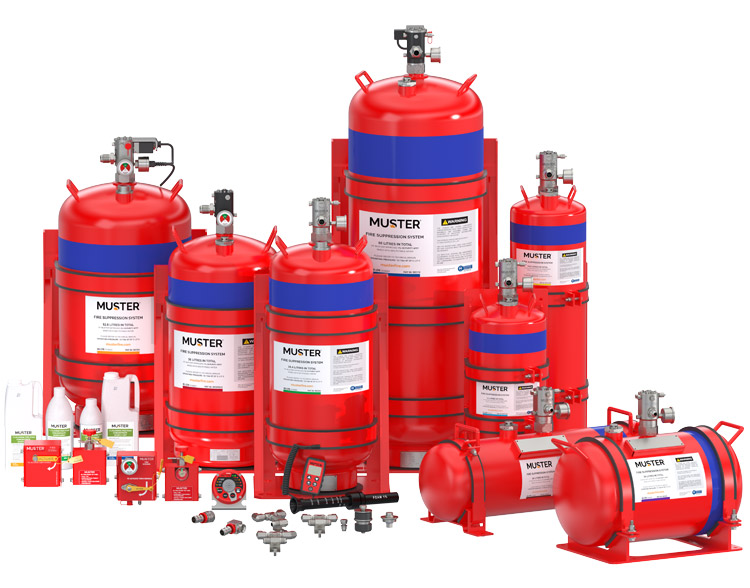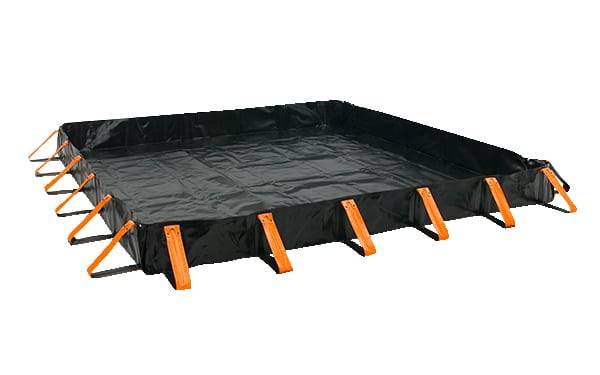Given its higher level of risk, fire protection for hazardous materials storage requires extra attention. Beyond safeguarding company assets, a well-designed fire protection system also ensures worker safety and minimizes potential environmental impact.
In this article, we’ll guide you through how to assess whether your hazardous materials storage fire protection system complies with current regulations—and why partnering with a professional fire protection system audit service is essential to maintaining safety and compliance.
Key Differences Between Regular Storages and Hazardous Materials Storage in Terms of Fire Risk
Regular storages typically store items such as manufactured goods, non-hazardous raw materials, and consumer products. In contrast, hazardous materials storage facilities contain various types of chemicals and waste materials with dangerous properties—such as flammability, toxicity, irritancy, or reactivity.
Just from the stored materials, it’s clear that these two types of facilities carry very different levels of fire risk. A regular storage generally poses a lower fire hazard. When fires do occur, they are often caused by external factors such as faulty electrical systems, improper equipment use, or poorly maintained heating systems.
Hazardous materials storage, however, presents a far greater and more complex fire risk due to the nature of the substances being stored. Even a small error in handling or storage procedures can lead to severe fires, explosions, or the release of toxic gases—posing significant threats to human safety and the surrounding environment.
Key Fire Protection Elements in Flammable Liquid Storage Areas
To minimize potential hazards, every hazardous materials storage facility must be equipped with a comprehensive fire protection system. This system combines both active and passive protection components that work together to prevent and control fire risks. Below are several key elements that should be in place to ensure effective hazardous materials storage fire protection.
Foam Suppression System

A foam suppression system uses foam as the primary extinguishing agent. The foam works by blanketing or covering the burning surface, effectively separating the fuel from oxygen and stopping the combustion process.
This system is particularly effective for fires involving flammable liquids such as oil, gasoline, and certain chemicals commonly stored in hazardous materials storage facilities. These substances cannot be extinguished with water, as they are immiscible with it—using water could actually cause the fire to spread further.
Additionally, a foam suppression system is considered safer for both personnel and the surrounding environment. The foam isolates the burning material from air, preventing flare-ups, while simultaneously cooling the affected area to help extinguish the fire more quickly and efficiently.
Spill Containment Area

A spill containment area is a mandatory feature in every hazardous materials storage facility. This area is designed with an impermeable floor and perimeter barriers to ensure that any chemical or hazardous waste spill is collected in a designated containment zone.
It’s important to note that chemical spills from hazardous materials storage not only pose environmental hazards but can also trigger fires. A properly installed spill containment system allows spills to be controlled within a safe boundary, preventing potential ignition sources and making emergency response faster and more effective.
Proper Ventilation and Grounding Systems
An ideal ventilation rate in hazardous materials storage should be at least 10% of the total building area. Adequate ventilation helps reduce the risk of explosion or fire caused by trapped gases, while maintaining stable and safe indoor temperatures.
Equally important, a grounding system plays a vital role in preventing sparks caused by static electricity or electrical short circuits—both of which can ignite flammable materials. Grounding ensures that excess or stray electrical charges are safely discharged into the ground.
Both ventilation and grounding are essential passive fire protection elements that support active systems such as fire alarms, sprinklers, and foam suppression systems. Together, they form a comprehensive hazardous materials storage fire protection strategy to keep your facility safe and compliant.
Legal and Financial Consequences of Failing to Meet Fire Protection Standards
Under Indonesian Law No. 32 of 2009 on Environmental Protection and Management, there are significant legal and financial consequences if your hazardous materials storage facility fails to comply with hazardous materials storage fire protection standards.
Article 76(2) states that administrative sanctions may be imposed on business owners and operators who violate environmental permits, starting with a written warning. If the violation causes significant environmental impact, the government may enforce stricter measures, including:
- Temporary suspension of production activities,
- Relocation of production facilities,
- Closure of wastewater or emission discharge channels,
- Demolition of non-compliant facilities,
- Seizure of equipment or materials that pose a violation risk,
- Temporary suspension of all business operations, or
- Other corrective actions aimed at stopping violations and restoring environmental functions.
Failure to comply with these government enforcement actions can lead to suspension or revocation of environmental permits. In more severe cases, criminal penalties may apply. Article 103 specifies that:
“Any person who produces hazardous waste and fails to manage it as required under Article 59 shall be subject to imprisonment for a minimum of one (1) year and a maximum of three (3) years, and a fine of no less than IDR 1,000,000,000 (one billion rupiah) and no more than IDR 3,000,000,000 (three billion rupiah).”
Fire Protection Readiness Audit for Your Hazardous Materials Storage
As the old saying goes, better safe than sorry. To avoid potential legal and financial consequences, it’s crucial to conduct a fire protection readiness audit for your hazardous materials storage facility before it’s too late.
Given the higher fire risks associated with materials stored in such facilities, this audit should only be performed by certified experts. Lumeshield provides a trusted Fire Protection System Evaluation service, conducted by a team of professionals with over a decade of experience and official certifications from BNSP and LPJK.
We offer comprehensive evaluations and improvement recommendations to ensure your fire protection system continues to operate in compliance with current regulations and industry standards.
Contact us now to schedule your hazardous materials storage fire protection audit—and ensure your facility’s safety is handled by the experts.

